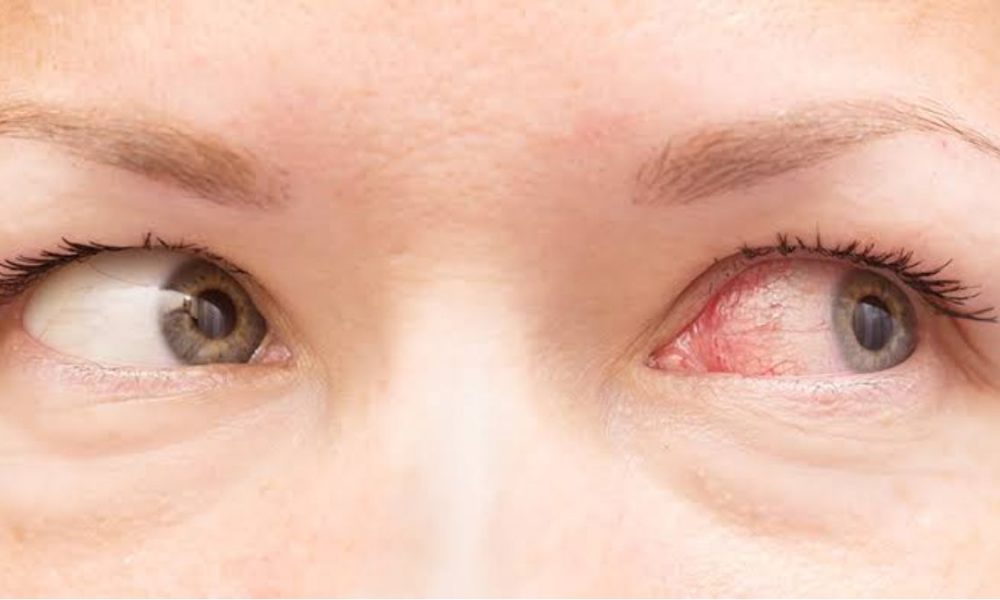
New Delhi: Conjunctivitis, commonly known as eye flu or pink eye infection has been lately upsurging at an alarming rate in several parts of the country.
As per the reports, more than 40,000 cases of the infection have come forward from the state of Maharashtra alone.
If eye specialists are to be believed, this sudden rise in eye infections is the result of the prolonged monsoon season which serves as a perfect environment for a number of waterborne viruses and bacteria that causes eye infection, common cold, and a number of other respiratory and allergic infections.
Experts explain that heavy rains in monsoon season often result in waterlogging across several regions of the affected area. This rises up the level of stagnant water which homes a number of deadly viruses and bacteria are born.
What is Conjunctivitis

Conjunctivitis refers to a condition where the outer membrane of the eyeball and inner eyelid gets inflamed and causes an uncomforting irritation and redness in the eyes of the infected person.
It is the most common aitiology of eye redness and discharge and every year, over 10 million cases of conjunctivitis are recorded in India.
Although the infection is usually short-lived and resolves within a week, it is dangerously contagious and one can get it just by skin-to-skin contact (hugs or handshakes) or by continuously looking into the eyes (contact with eye secretion) of the infected person.
Causes and symptoms
Exposure to water-borne viruses and bacteria which usually emerge in stagnant water bodies is one of the most common reasons for getting conjunctivitis. Its symptoms include stinging pain, itching, and/or prolonged redness in one or both eyes. The infected person might also get occasional tear discharge and runny nose.
As per a Doctor from Delhi’s Sufdurjung Hospital, at least 80 cases of pink eye are being recorded in the city per day ever since the surge of monsoon. Other than Delhi, Major cities in which pink eye infection is surging at a rapid pace are Pune (8500), Amravati (2,311), Gondiya (2,5910), and Buldhana(6,600)
MCD teachers request closure of schools
Concerned by this sudden surge of conjunctivitis cases in the city, teachers of MCD school recently wrote a letter to the city’s mayor Shelly Obroi and requested her to shut down the schools till 31 July in order to prevent the spread of the contagious infection amongst school going children.
In the latter addressed to the city’s Mayor, MCD teacher’s association Shikshak Nayay Manch pleaded with her to take immediate cognizance of the matter and give further directions to control the rapidly increasing pink eye cases in the schools.
Do sunglasses help?

Wearing sunglasses are advised for the person suffering from pink eye infection as it not only helps in significantly reducing the irritation and stinging pain in the eyes but also prevent the infection from getting worse by preventing dust particles, bacterias, and viruses from coming in direct contact with the patient’s eyes.
However, it is important to note here that just wearing sunglasses won’t completely stop the infection from spreading to other people and thus, the infected person is advised to avoid going to crowded places even if he is wearing shades.
What to do upon getting infected?
Usually, if one takes necessary precautions and measures, the infection itself goes away in a week or two and does not require any visit to the doctor. However, in case the infection lasts more than a span of two weeks with little to no improvement in the patient’s condition, seeing a doctor and getting the needed medical care and attention is strongly advised.
Other than that, adapting to a hygienic and healthy lifestyle and preventing waterlogging in and around the area one resides in can also significantly reduce the chances of getting infected.




